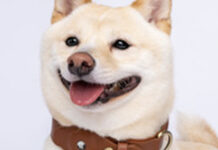
Why caring for your pet’s pearly whites is more important than you’d think
BY CORRINA MOSCA
Dogs are infamous for their bad breath, an untimely whiff of which can send anyone running. However, despite the old adage that a dog’s mouth is cleaner than a human’s, periodontal disease is still a concern for your pets.
In fact, an astonishing 80 per cent of cats and dogs display some form of this condition. “It’s a very common problem,” says Dr. Clayton Greenway, DVM, B.Sc, lead veterinarian at Scarborough’s West Hill Animal Clinic. “You should at least be aware of it.”
KNOW THE RISKS
“The fact is, dental disease harbours a lot of bacteria,” he continues. In extreme cases, oral bacteria may spread through an animal’s body, potentially causing infections in other major organs such as the heart, liver and kidneys.
ACE THE ORAL EXAM
If you suspect that your pet may have periodontal disease, give them an at-home check-up.
“What [you] really want to look for is inflammation—or redness—of the gums,” explains Dr. Greenway, who also hosts Animal House on Newstalk 1010 radio. This is a major sign of gingivitis, which causes the gums to recede away from the teeth, advancing dental disease.
Moreover, he adds that pain—a main indicator of oral disease—is “rarely noticed by owners.” Unfortunately, your pets can’t communicate their discomfort with you—if you’re concerned about their oral health, visit your veterinarian.
BRUSHING IS KEY
Luckily, this ailment is preventable with proper oral care. The best way to maintain your pet’s pearly whites, says the American Veterinary Dental College (AVDC), is through daily brushing.
Before you start, buy pet-specific toothpaste. As obvious as this may seem, never use human dental products on your animals: most of them include fluoride, which is toxic to cats and dogs. Take the time to pick out well-researched and tested pet products with the Veterinary Oral Health Council (VOHC) seal.
“[Brushing is] a lot easier to do than people think,” notes Dr. Greenway. “You can [simply] hold the muzzle closed and brush the outsides of the teeth [and gums].”
While some animals may initially be finicky, most can grow to accept brushing. Dr. Greenway suggests acclimating them slowly to a routine, first introducing your pet to toothpaste, then to finger brushing, and finally to a toothbrush.
AN ALTERNATIVE FOR FUSSY FIDO
Have no fear: if your pet doesn’t accept brushing, other options are available. Dr. Greenway notes that while brushing is best, dental diets—or medically formulated foods—work as well.
While oral rinses and special treats are also available, the AVDC—and Dr. Greenway—note that they’re “far inferior” to brushing. Cesar Milan—also known as The Dog Whisperer—suggests that reliance on them is comparable to humans chewing gum and using mouthwash for dental maintenance.
DOGGIE DENTIST
Even with a thorough care routine, your pet’s pearly whites still require a check-up every six to twelve months.
“When I was a kid, animals didn’t [get] teeth cleanings,” says Dr. Greenway. “[But] it is an important factor in overall healthcare. [Still,] for some people, their philosophy of ownership may not include dental hygiene or dental care … don’t feel guilty … it can be expensive.”
The bottom line: if you are able to provide oral care to your pets, it can make a world of a difference. Treat your pet’s teeth like you would your own, and you’ll both be smiling. VM










